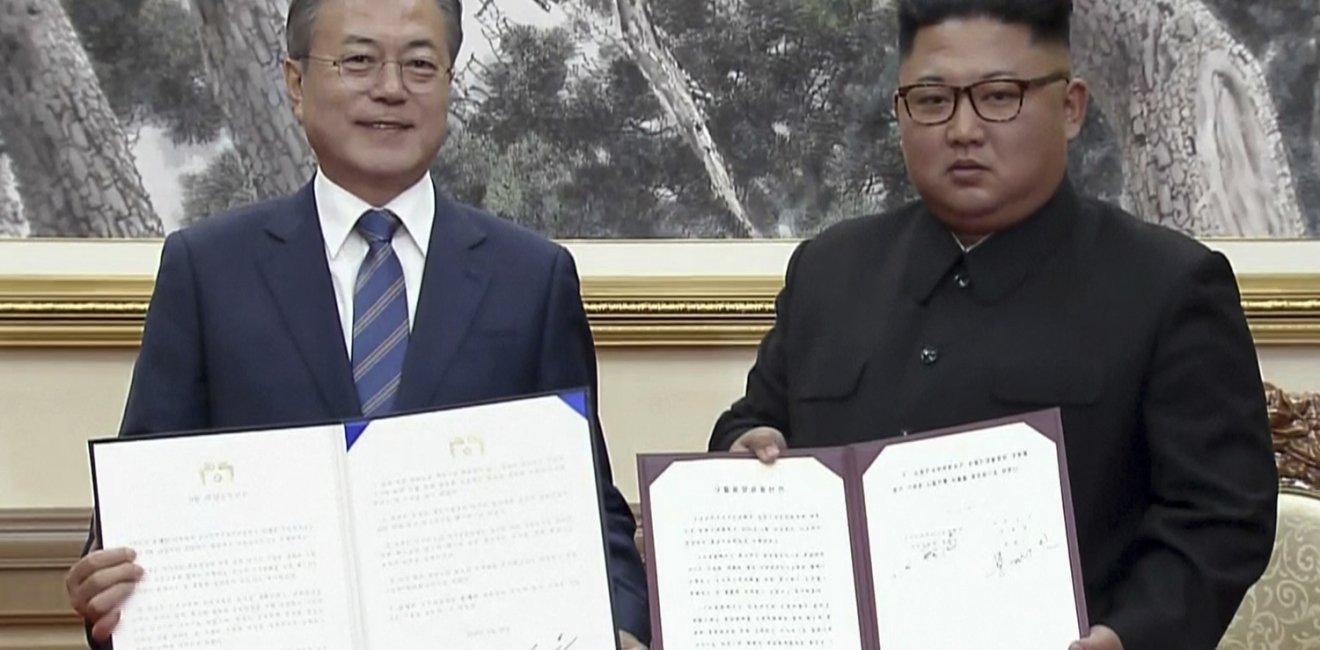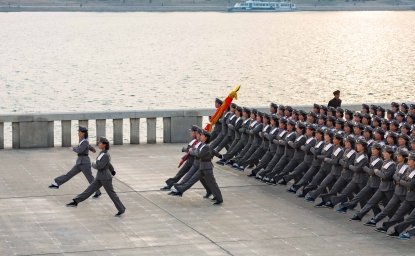This week’s summit in North Korea between Kim Jong Un and South Korea’s Moon Jae-in was packed with milestones and camera-ready moments, as the two leaders made another show of Korean unity in their third meeting this year.
Pomp and ceremony aside, the South Korean president knew his mission: to get enough concrete promises on denuclearization from North Korea’s leader to put the U.S.-North Korean talks back on track. While the Korean leaders made stirring and promising pledges on inter-Korean reconciliation, both Kim and Moon know that true, lasting peace cannot be brokered without the United States, which remains locked in a technical state of war with North Korea dating back to the 1950s. The Korean War and U.S. military presence in South Korea has long been North Korea’s justification for building nuclear weapons.
Moon may have nailed just enough commitment from Kim Jong Un to allow both North Korea and the United States a face-saving way to move forward with their talks.
Moon may have nailed just enough commitment from Kim Jong Un to allow both North Korea and the United States a face-saving way to move forward with their talks. We should exercise caution: The promises in their joint statement – to dismantle a rocket launchpad "under the observation of experts from relevant countries," for one – are conditioned on reciprocal action from the United States. North Korea has long demanded that the denuclearization process entail steps by both Pyongyang and Washington, not just dismantlement by North Korea. But it may be just enough commitment for President Moon to take to President Trump in their summit on the sidelines of the UN General Assembly this month, and to lobby for the next step: a Kim-Trump summit where the North Korean and U.S. leaders would agree to an end-of-war peace declaration.
On Moon’s last day, the two leaders will make a journey to Mount Paektu in the far north, a spot traditionally considered sacred by all Koreans. It will be a symbolic homecoming of sorts for President Moon, whose parents were born in North Korea. It will also serve as another made-for-propaganda moment for the North Koreans to have a world leader visit Paektu. For the North Koreans, Paektu is not just any mountain; the mythology that the Kim family has woven to justify their hold on leadership has its roots on sacred Paektu. By visiting Paektu, President Moon also is sanctioning the mythology around the Kim family, a symbolic gesture that may be lost on most outsiders, but which will carry great weight inside North Korea – and help solidify Kim’s standing among his people.






